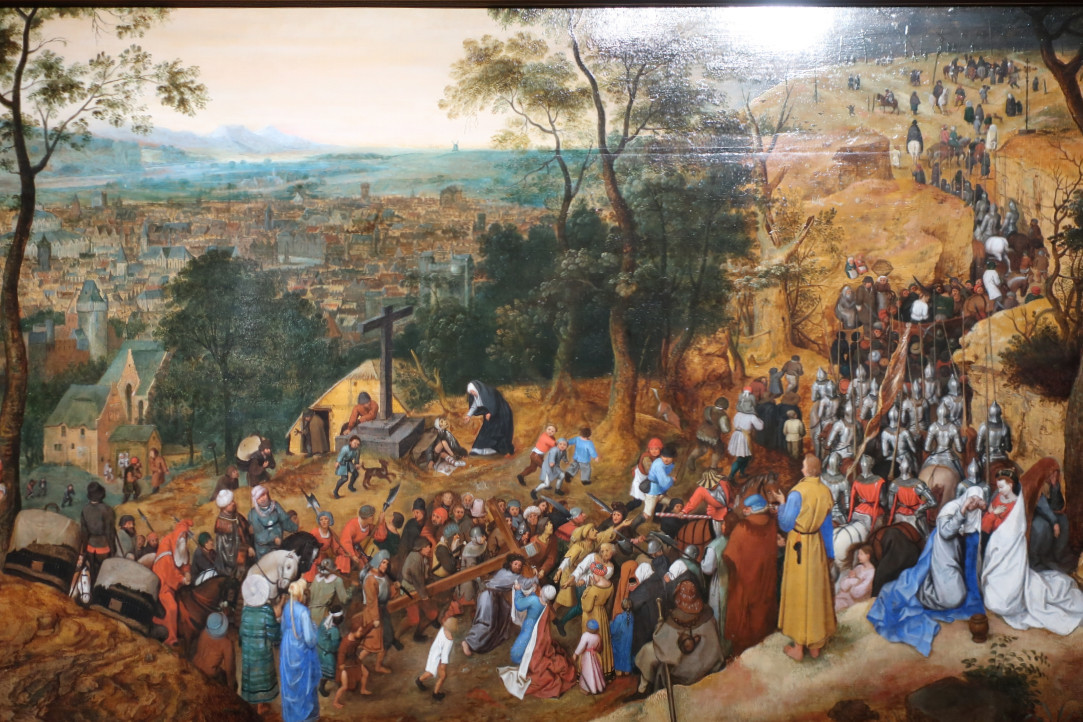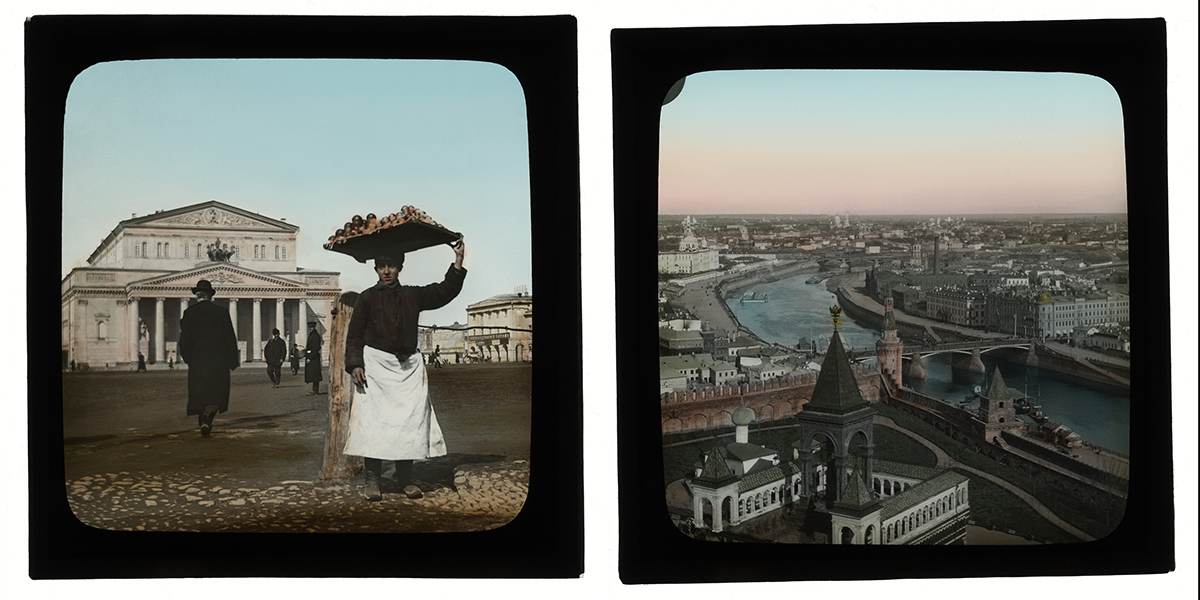Exhibitions in May: Brueghels, Russian Estates, Soviet Modernism and More

To help prevent the spread of COVID-19, the Russian government announced that May 1-10 will be non-working days. For those who are staying in Moscow, we recommend a selection of exhibitions to visit during this unexpected vacation.
New Jerusalem Museum. The Younger Brueghels and Their Time. Dutch Painting of the Golden Age
This exhibition in the New Jerusalem Museum, approximately 40 km north-west of Moscow, has been a hit since December. Initially planned to be open until April, it was extended until June 27, 2021.
Valeria and Konstantin Mauergauz’s collection is one of the biggest private collections in Russia and includes paintings from the 16th and 17th centuries. The exhibition showcases a total of 70 paintings – not only works by Brueghel, but also those by their contemporary Flemish and Dutch artists.
The core of the exhibition are paintings by Breughel dynasty. The main artists are Pieter Brueghel the Younger (known as ‘Hell Brueghel’), Jan Brueghel the Elder (‘Velvet Brueghel’), and his son, Jan Brueghel the Younger. There are no paintings in Russia by the dynasty head, Pieter Brueghel the Elder, whose name symbolizes the Golden Age of national Dutch painting, and they appear on the market extremely rarely. But the great artist’s genius stimulated the long, multi-century development of a special Brueghel tradition, which is reflected in the exhibition.
Returning to the Estate
In the same museum, you can attend another exhibition – ‘Returning to the Estate’ – which immerses its visitors in an old Russian estate — usadba. In the 1920s and 1930s, the New Jerusalem Museum became a place to preserve the nationalized artistic heritage of dying estates of the Moscow region. Today, the exhibition includes over 400 works of art, crafts and archival documents. Visitors are invited not to look at specific exhibits, but to take a journey in the era and look at the usadba as a special place with its own lifestyle and unique atmosphere. Open until May 30, 2021.
If you have time in Istra, make sure you visit the magnificent New Jerusalem Monastery, which is a 10-min walk from the museum.
Tickets: RUB 500. No tickets are available on-site, so make sure to buy an online ticket in advance.
Address: 1 Novoierusalimskaya Naberezhnaya, Istra, Moscow Region
How to get there: local train to Istra station; buses No. 32, 33 to the ‘Muzey’ bus stop (or take a taxi from the railway station).
Opening hours: Sun, Tue, Wed 10 am – 7 pm; Thu, Fri, Sat 10 am – 8 pm; closed on Mondays. April 29: 10 am – 6 pm. May 1 to May 10: 10 am – 8 pm
Seekers of Art at The Museum of Russian Impressionism
The Museum of Russian Impressionism’s first project for its fifth anniversary will be the ‘Seekers of Art’ exhibition, which shows how dedicated collectors amassed and preserved museum-grade works during the years of Thaw and stagnation. The exhibition showcases more than 70 works of Russian and Soviet modernism by artists of the first third of the 20th century — from Konstantin Korovin and Alexandre Benois to Vladimir Tatlin and Kazimir Malevich. From the 1950s to 1980s works by modernist artists were publicly condemned and excluded from the permanent displays of state museums. Important Russian artworks were preserved largely due to collectors like film director Solomon Shuster, simultaneous interpreter Alexei Stychkin, doctors Alexander Myasnikov and Aram Abramyan and the eminent diplomat Vladmir Semenov. The collectors sought out these artworks under threat of arrest. Open until August 20, 2021.
Tickets: RUB 500. No tickets are available on-site, so make sure to buy an online ticket in advance.
Address: 15 Leningradsky Prospekt, Building 11
Opening hours: Fri-Tue 11 am – 8 pm; Wed, Thu 12 pm – 9 pm
Royal Court Costumes from the Mid-19th – Early 20th Centuries from the State Hermitage Collection at State Historical Museum
The exhibition presents the ceremonial and everyday life of the Russian Court – one of the grandest of Europe’s royal courts. It includes paintings and drawings, archival documents, weapons and precious metal work. But its main exhibits are outfits and accessories from the personal belongings of emperors and empresses, members of the royal family, the aristocracy, courtier ladies and gentlemen and servants of the Highest Court of the late Romanov era.
Tickets: RUB 800. No tickets are available on-site, so make sure to buy an online ticket in advance.
Address: 1 Red Square
Opening hours:
Until April 30: Mon, Wed, Thu, Sun 10 am – 6 pm; Fri, Sat 10 am – 9 pm; closed on Tuesdays.
May 1 to August 31: Mon – Sun 10 am – 9 pm; closed on the first Tuesday of each month.
Changes in opening hours due to the Victory Day Parade on Red Square:
April 29: 10 am – 2 pm; closed on May 1, May 8 and May 9; May 7: 1 pm – 9 pm.
Colour Fragments of an Empire at Schusev State Museum of Architecture

The Schusev State Museum of Architecture and the Dialog Gallery are presenting an exhibition of unique colour lantern slides by Carl Berggren made in the 1900s and 1910s.
The exhibition showcases over 200 hand-coloured lantern slides with views of Moscow and other areas of the Russian Empire made in the 1900s and 1910s by Carl Elof Berggren, an officer of the Swedish General Staff. Carl Berggren served on the mission of the Swedish Red Cross in the Russian Empire for about 10 years. He fell in love with the country, learned Russian and travelled to the country’s most remote areas. As an amateur photographer, he created a photographic chronicle of Russian life of the early 20th century during his travels.
The 90 colour images of Moscow of the 1900s make up nearly half of the collection. The archive contains panoramas from the Belltower of Ivan the Great, views of the Kremlin and the Moscow River, and photos of many other sights. Detailed architectural scenes alternate with candid depictions of everyday city life. Some of the images depict Crimean monuments and the everyday life of Crimean Tatars. There are views of Turkestan Province and antiquities of Samarkand and Bukhara; the Caucasus Mountains, Tiflis and Mtskheta; as well as Russian villages.
As a career officer, Carl Berggren was particularly interested in soldiers and their way of life. Images of soldiers marching through snowy terrain and waiting on railway stations during troop deployment reflect the spirit of the period between the Russo-Japanese War and World War I.
Carl Elof Berggren recreated the atmosphere of the final years of the Russian Empire, leaving behind a unique historical chronicle of people, places and events.
Open until May 16, 2021.
Tickets: RUB 300.
Address: 5/25 Vozdvizhenka Ulitsa
Opening hours: Tue, Thu 1 pm – 9 pm; Wed, Fri, Sat, Sun 11 am - 8 pm; closed on Mondays.

